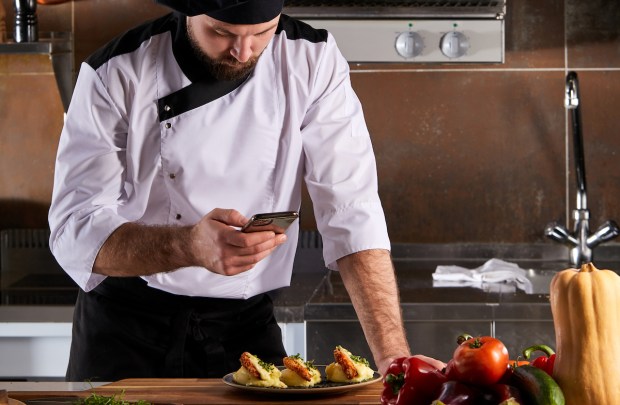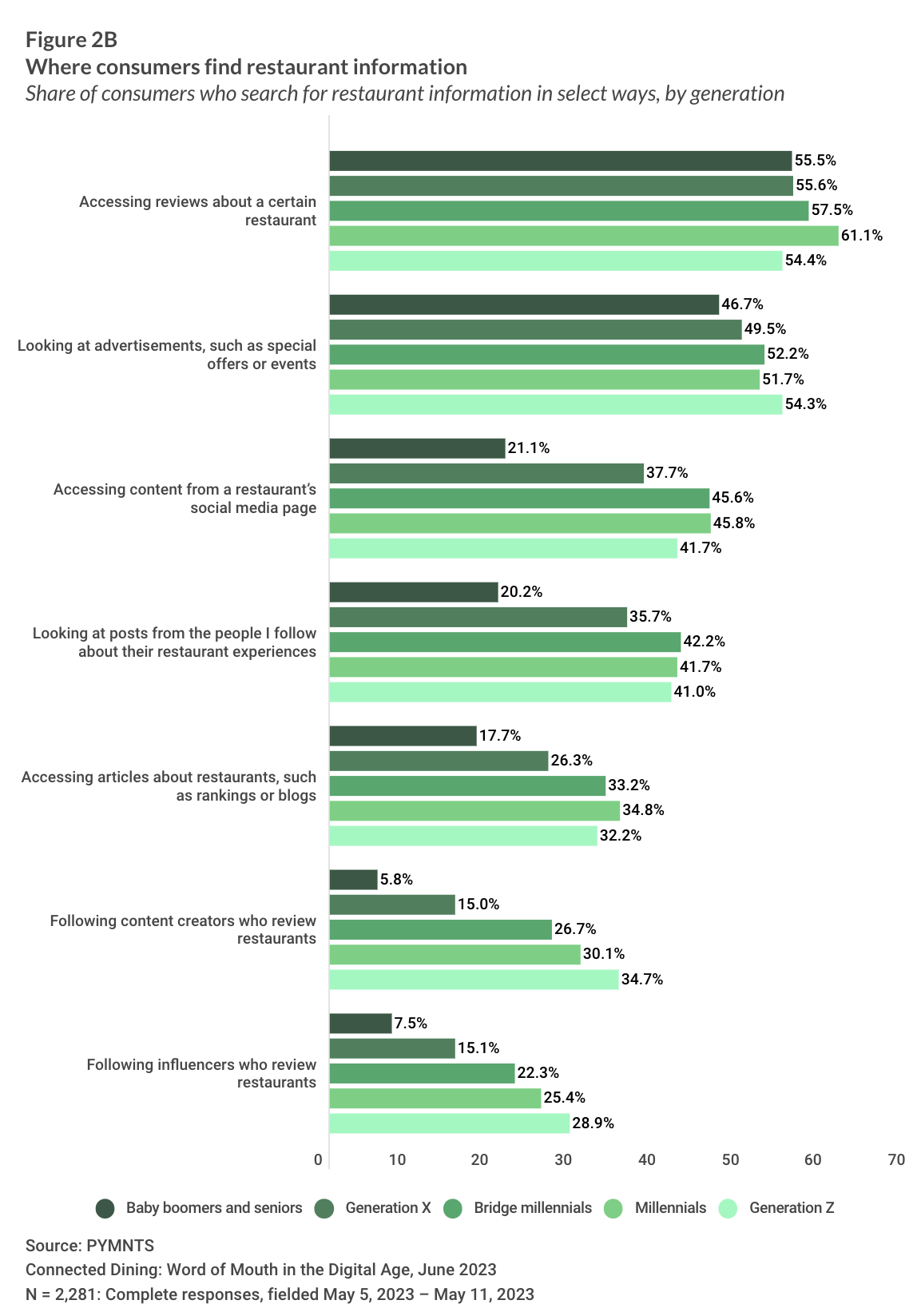Nearly Half of Millennials Turn to Restaurants’ Social Media for Discovery

Restaurants looking to build an audience with millennial consumers may want to start by taking another look at their social media presence, according to PYMNTS data.
By the Numbers
The latest edition of PYMNTS’ exclusive Connected Dining report, “Connected Dining: Word of Mouth in the Digital Age,” which drew from a May survey of more than 2,200 U.S. consumers, examines how different consumer demographics learn about restaurants in the digital world.
The study revealed that 46% of all millennials and bridge millennials reported that they search for restaurant information by accessing content from eateries’ social media pages, well above the 37% of the population as a whole that does so.

The Data in Action
At various points, restaurants have indeed found ways to make social media work in their favor.
Take, for instance, virtual brand Krispy Rice’s Instagram success. Vincenzo Rossy, senior director of openings for C3, told PYMNTS in a 2021 interview that the brand saw “explosive growth” and “reached new heights” thanks to “word-of-mouth and social media buzz.” The brand’s Instagram page has 44,000 followers, who tune in for shots of the brand’s cute, colorful packaging and its entertainment, sushi-themed content.
Many small brands, especially bakeries, found a following via the platform during the pandemic. For example, Pandemic Donuts, a doughnut delivery service based in Denver, Colorado, expanded from a virtual brand that took orders from Instagram followers to a brick-and-mortar store.
“So the way we’re set up … is we use our Instagram to market directly to our clients, communicate our day-to-day routines, show them that we’re human, show them we make mistakes, build … a grassroots, real connection with our clientele,” Co-founder Michael Milton told PYMNTS. “And then we push our clientele to our website through our Instagram.”
Relying on social media can leave restaurants at these platforms’ mercy, however. Some eateries saw the downside of this dependence last year, when Instagram changed its algorithm, shifting away from photos to prioritize video content, leaving many businesses with a steep drop-off in engagement.

